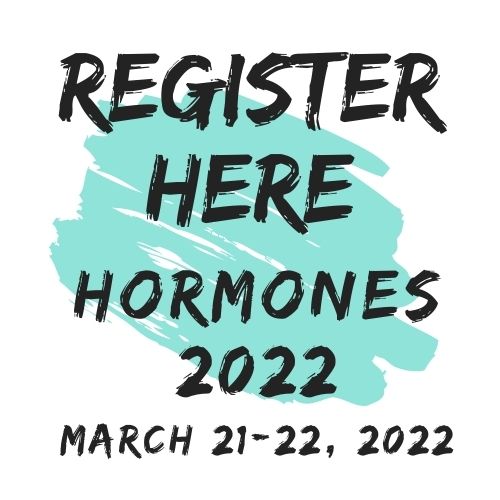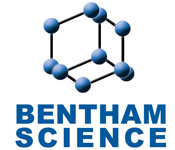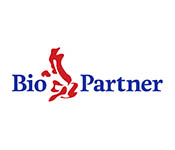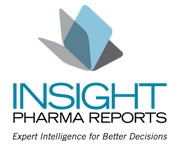About Conference
Conference Series Ltd is a renowned organization that organizes highly notable Endocrinology and Hormone conferences throughout the globe. After a successful series of conferences, Conference Series Ltd is currently bringing forth the “12th World Congress on Hormonal Imbalance and Hormone Replacement Therapy” during March 21-22, 2022 at Basel, Switzerland.
Conference Series Ltd Organizes 1000+ Conferences Every Year across USA, Europe & Asia with support from 1000 more scientific societies and Publishes 700+ Open access journals which contains over 100000 eminent personalities, reputed scientists as editorial board members.
HORMONES-2022 conference will focus on the latest and exciting innovations in all areas of endocrinology research which offers a unique opportunity for investigators across the globe to meet, network, and perceive new scientific innovations. This year’s annual congress highlights the theme, “Recent trends and developments in controlling Hormones” which reflects the innovative progress in medicine research. The two days conference includes workshops, symposiums, special keynote sessions conducted by eminent and renowned speakers who excel in the field of Endocrinology. This National Hormones Conference also encourages the active participation of young student researchers as we are hosting Poster Award Competition and Young research Forum at the conference venue.
Take advantage of opportunities to learn about hormones and control research from a variety of oral and poster presentations. Meet and network with Endocrinologists ranging from students to deans, faculty, and researchers. Take advantage of opportunities to collaborate with Endocrinologists from around the world. Attend prominent plenary sessions about relevant issues affecting medicine education.
Who can attend?
Hormone conference brings together individuals who have an interest in different fields of Endocrinology. It is a forum to explore issues of mutual concern as well as exchange knowledge, share evidence, ideas, and generate solutions.
Why to Attend?
Hormone conferences provides a global platform for exchanging ideas and make us updated about the latest innovations in Endocrinology. Opportunity to attend the presentations delivered by Eminent Scientists from all over the world
Sessions/Tracks
1. Aldosterone:
It's produced from the Adrenal glands. Aldosterone is that main mineralocorticoid steroid hormone made by the zona glomerulosa of the adrenal cortex within the adrenal gland. It regulates salt, water balance, and blood pressure.
2. Corticosteroid:
It is produced from the Adrenal glands. Corticosteroids are man- made drugs that closely resembles cortisol, a hormone produced by adrenal glands naturally. Corticosteroids are usually noted by the shortened term "steroids." Corticosteroids are entirely different from the male hormone-related steroid compounds that some athletes abuse. It controls key functions within the body; acts as an anti-inflammatory; maintains blood sugar levels, blood pressure, and muscle strength; regulates salt and water balance.
3. Antidiuretic Hormone (Vasopressin):
It's produced from the Pituitary gland. Vasopressin (also called antidiuretic hormone) plays a very important role in regulating the circadian rhythm — the periods of sleepiness and wakefulness in a 24-hour cycle. Vasopressin in addition helps maintain the body's internal temperature, its blood volume, and also the proper flow of urine from the kidneys. It affects water retention in kidneys; controls blood pressure.
4. Adrenocorticotropic Hormone (ACTH):
It's produced from the pituitary gland. Adrenocorticotropic hormone (ACTH) is a hormone that regulates the production of cortisol. Cortisol is a steroid hormone made by the adrenal glands which plays a key role for regulating glucose, protein, and lipid metabolism, suppressing the immune system's response, and helping to maintain blood pressure. It regulates production of sex hormones (estrogen in women and testosterone in men) and therefore the production of eggs in women and sperm in men.
5. Growth Hormone (GH):
It's produced from the pituitary gland. Growth hormone (GH), in addition called somatotropin or human growth hormone is a peptide hormone secreted by the anterior lobe of the pituitary gland. It helps in the growth of essentially all tissues of the body, including bone. It affects growth and development; stimulates protein production; affects fat distribution.
6. Luteinizing Hormone (LH) and Follicle-Stimulating Hormone (FSH):
It's produced from the Pituitary gland. Luteinizing hormone (LH) and follicle-stimulating hormone (FSH)are called gonadotropins as they stimulate the gonads, in males-the testes and in females-the ovaries. They're not necessary for life, but are essential for reproduction. It controls production of sex hormones (estrogen in women and testosterone in men) and also the production of eggs in women and sperm in men.
7. Oxytocin:
It's produced from the Pituitary gland. The two main actions of oxytocin within the body are contraction of the uterus during childbirth and lactation. Oxytocin stimulates the uterine muscles to contract and in addition increases production of prostaglandins that increases the contractions further. It stimulates contraction of uterus and milk ducts in the breast.
8. Prolactin:
It's produced from the Pituitary gland. Prolactin is a hormone created by the pituitary gland which is a small gland at the base of the brain. prolactin causes the breasts to grow and make milk during pregnancy and after birth. prolactin levels are usually high for pregnant women and new mothers. Levels are usually low for nonpregnant women and for men. It initiates and maintains milk production in breasts; impacts sex hormone levels.
9. Thyroid-Stimulating Hormone (TSH):
It's produced from the Pituitary gland. Thyroid-stimulating hormone is a pituitary hormone that stimulates the thyroid gland to produce thyroxine, and then triiodothyronine that stimulates the metabolism of almost every tissue within the body. It stimulates the production and secretion of thyroid hormones.
10. Renin and Angiotensin:
It's produced from the Kidneys. The renin–angiotensin system (RAS), or renin–angiotensin–aldosterone system (RAAS), is a hormone system that controls blood pressure and fluid and electrolyte balance, as well as systemic vascular resistance. This will increase the volume of extracellular fluid within the body, that in addition can increase blood pressure. It controls blood pressure, both directly and additionally by regulating aldosterone production from the adrenal glands.
11. Erythropoietin:
It's produced from the Kidneys. Erythropoietin (EPO) is a hormone produced by the kidneys, with small amounts made by the liver. EPO plays a key role in the production of red blood cells (RBCs), that carry oxygen from the lungs to the rest of the body. This measures the amount of erythropoietin in the blood. It affects red blood cell (RBC) production.
12. Glucagon:
It's produced from the pancreas. Glucagon is a peptide hormone prepared by alpha cells of the pancreas. It raises concentration of glucose and fatty acids in the blood, and is considered to be the main catabolic hormone of the body. It's in addition used as a medication to treat variety of health conditions. It raises blood sugar levels.
13. Insulin:
It's produced from the pancreas. Insulin is a peptide hormone produced by beta cells of the pancreatic islets; it's considered to be the main anabolic hormone of the body. It controls the metabolism of carbohydrates, fats and protein by promoting the absorption of glucose from the blood into liver, fat and skeletal muscle cells. It lowers blood sugar levels; stimulates metabolism of glucose, protein, and fat.
14. Estrogen:
It's produced from the Ovaries. Estrogen is a kind of hormone that has a crucial role in the health of women. There are three kinds of estrogen: estrone, estradiol, and estriol. They have an effect on the sexual and reproductive development in girls and women. It affects development of female sexual characteristics and reproductive development, vital for functioning of uterus and breasts; in addition, protects bone health.
15. Progesterone:
It's produced from the Ovaries. Progestogen is an endogenous steroid and progestogen sex hormone involved in the menstrual cycle, pregnancy, and embryogenesis of humans and different species. It stimulates the lining of the uterus for fertilization; prepares the breasts for milk production.
16. Parathyroid Hormone (PTH):
It is produced from the Parathyroid glands. Parathyroid glands produce parathyroid hormone, whose key role is to regulate calcium levels in the blood. Right amounts of calcium levels are important in the human body, since small changes can cause muscle and nerve problems. It is the most important regulator of blood calcium levels.
17. Thyroid Hormone:
It is produced from the Thyroid gland. The thyroid gland utilizes iodine from food to make two thyroid hormones: triiodothyronine (T3) and thyroxine (T4). It stores these thyroid hormones and releases them as and when required. The hypothalamus and the pituitary gland, located in the brain, help control the thyroid gland. It controls metabolism; also affects growth, maturation, nervous system activity, and metabolism.
18. Epinephrine:
It is produced from the Adrenal glands. Epinephrine, also known as adrenaline, is a medication as well as a hormone. As a medication, it is helpful in treating a number of conditions, including anaphylaxis, cardiac arrest, asthma, and superficial bleeding. It increases heart rate, oxygen intake, and blood flow.
19. Norepinephrine:
It is produced from the Adrenal glands. Norepinephrine, also called noradrenaline or noradrenalin, is a naturally occurring chemical in the body that acts as both a stress hormone and neurotransmitter (a substance that sends signals between nerve cells). It's released into the blood as a stress hormone when the brain recognizes that a stressful event has occurred. It Maintains blood pressure.
20. Testosterone:
It is produced from the Testes (testicles). Testosterone is the main sex hormone and anabolic steroid in males. In male humans, testosterone plays a role in the development of male reproductive tissues such as testes and prostate and also promotes secondary sexual characteristics like increased muscle and bone mass, and the growth of body hair. It develops and maintains male sexual characteristics and maturation.
21. Melatonin:
It is produced from the Pineal gland. Melatonin is a hormone produced in the body which regulates night and day cycles or sleep-wake cycles. It is often used for the short-term treatment of insomnia, such as from jet lag or shift work, and is typically taken orally. It releases melatonin during night hours to help with sleep.
22. Growth Hormone Releasing Hormone (GHRH):
It is produced from the Hypothalamus. Growth hormone-releasing hormone (GHRH) is produced by the hypothalamus and helps in growth hormone synthesis and is released in the anterior pituitary gland. Additionally, GHRH is an important regulator of cellular functions in many cells and organs. It regulates growth hormone release in the pituitary gland.
23. Thyrotropin Releasing Hormone (TRH):
It is produced from the Hypothalamus. Thyrotropin-releasing hormone is the main controller of thyroid gland growth and function (including the secretion of the thyroid hormones thyroxine and triiodothyronine). These hormones manage the body's metabolic rate, heat generation, neuromuscular function and heart rate, among other things. It regulates thyroid stimulating hormone release in the pituitary gland.
24. Gonadotropin Releasing Hormone (GnRH):
It is produced from the Hypothalamus. Gonadotropin-releasing hormone (GnRH) is a releasing hormone in charge of for the release of follicle-stimulating hormone (FSH) and luteinizing hormone (LH) from the anterior pituitary. GnRH is a tropic peptide hormone synthesized and released from GnRH neurons in the hypothalamus. It manages LH/FSH production in the pituitary gland.
25. Corticotropin Releasing Hormone (CRH):
It is produced from the Hypothalamus. Corticotropin-releasing hormone (CRH) is a peptide hormone which stimulates both the synthesis and the secretion of adrenocorticotropic hormone (ACTH) in the corticotropin-producing cells (corticotrophs) of the anterior pituitary gland. It balances adrenocorticotropin release in the pituitary gland.
26. Humoral Factors:
It is produced from the Thymus. Humoral factors are carried by the circulatory system, that is, in blood, and include: Humoral immunity factors in the immune system. Hormones in the endocrine system. It helps develop the lymphoid system.
Market Analysis
Importance and Scope:
Global “Hormones Market" is expected to grow at a steady rate during the forecast period 2021-2026, Hormones Market report provides insights into the latest trends. It explains in detail key aspects of the market, with focus on leading key player’s areas which have witnessed the highest demand, leading regions and applications. It further extends qualitative as well as quantitative information regarding the factors, challenges, and opportunities that will explain the growth of the market over 2021-2026, The Report Contain Many Pages with Detailed Analysis.

The Global Hormones market is expected to increase at a considerable rate during the forecast period, between 2021 and 2026. In 2020, the market is moving at a steady rate and with the rising adoption of strategies by key players; the market is expected to rise over the projected horizon.
The Hormones market revenue was Million USD in 2016, went ahead to Million USD in 2020, and will reach another Million USD in 2026, with a CAGR of during 2020-2026.
Global Hormones Market Development Strategy Pre and Post COVID-19, by Corporate Strategy Analysis, Landscape, Type, Application, and Leading 20 Countries analyzes the potential of the global Hormones industry, providing statistical market dynamics, growth factors, major challenges, PEST analysis and market entry strategy Analysis, opportunities and forecasts. The biggest part of the report is to provide companies in the industry with a strategic analysis of the impact of COVID-19. At the same time, these reports investigated the market of leading 20 countries and introduce the market potential of these countries.










